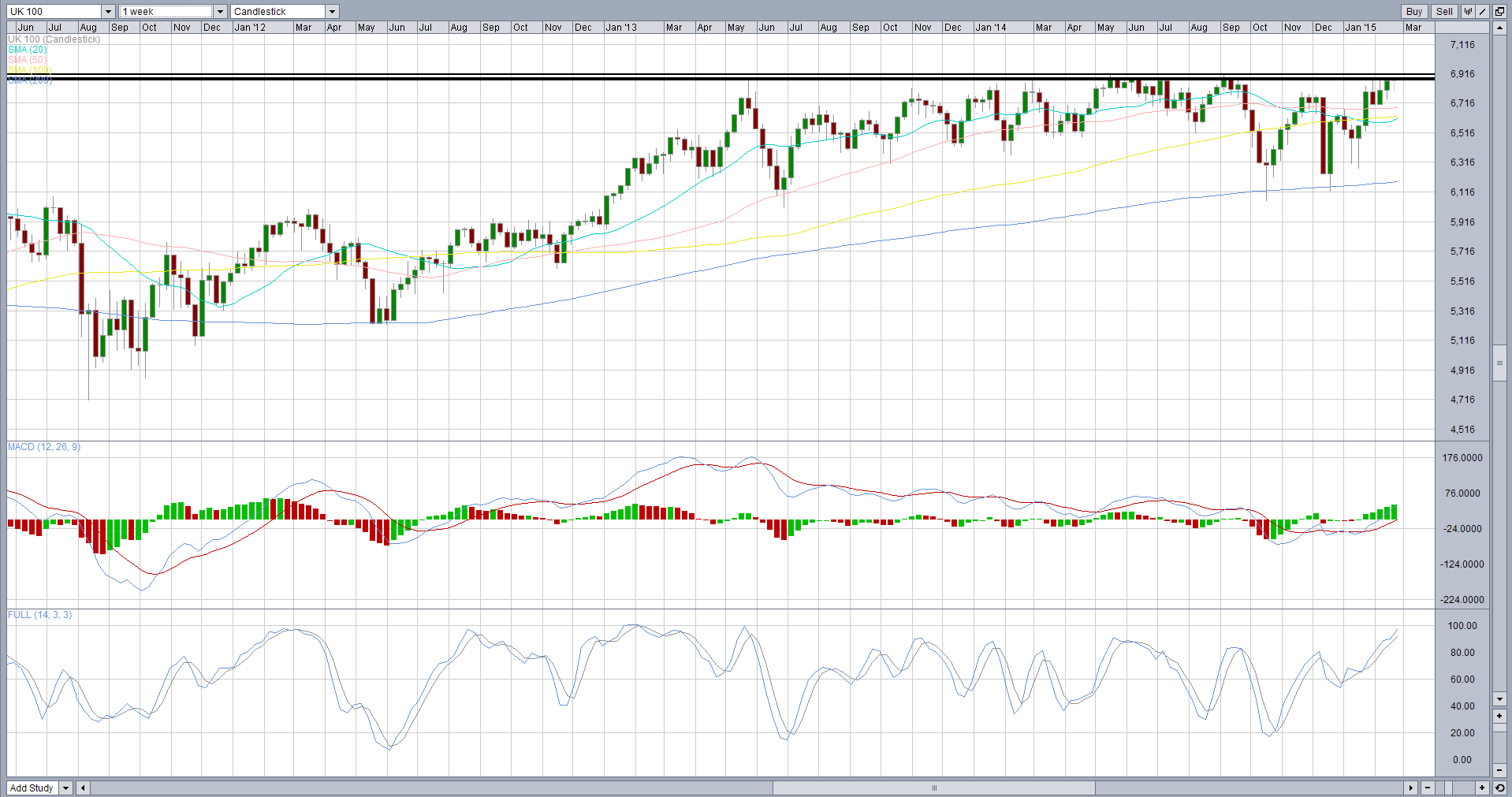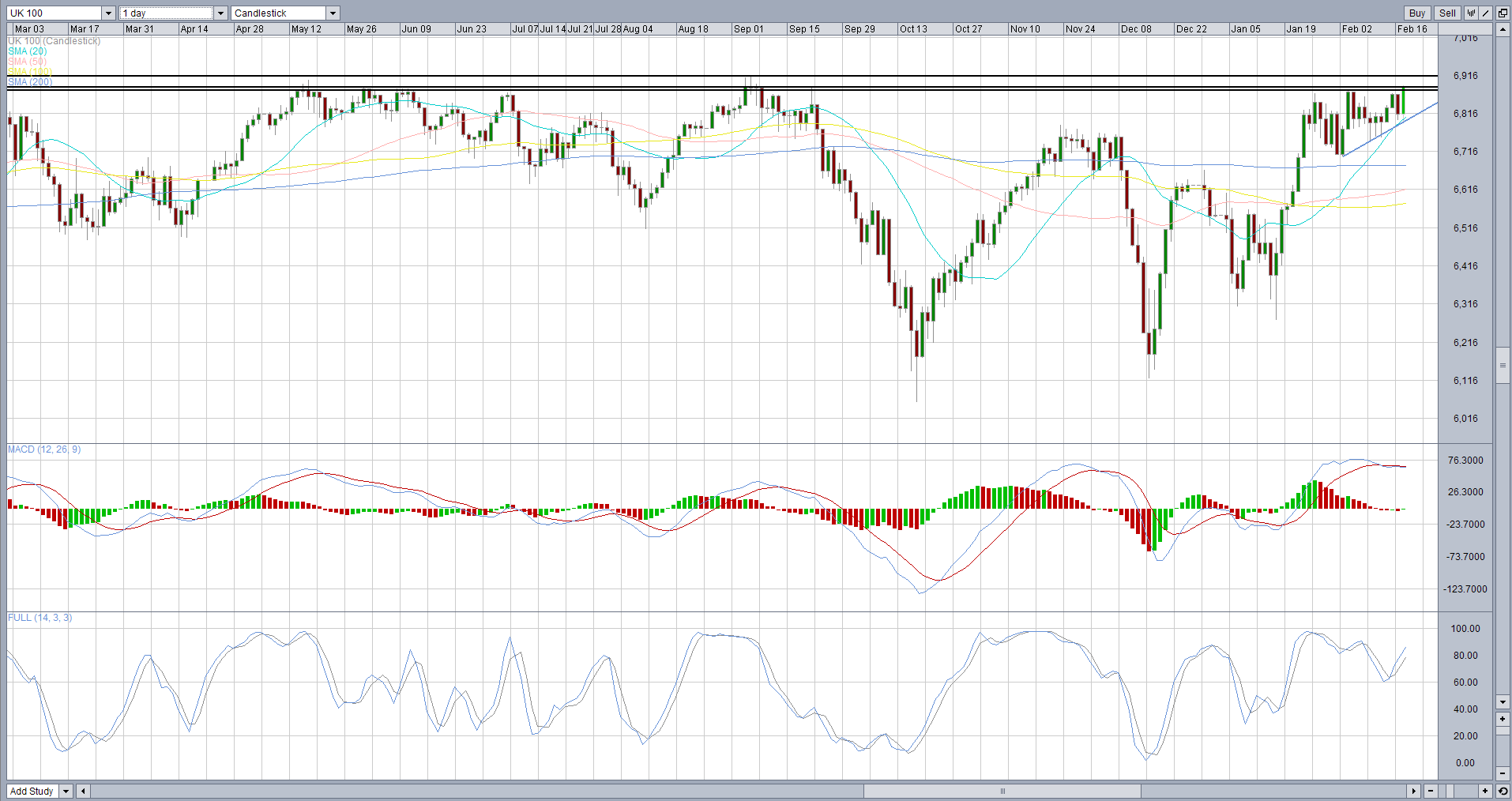The UK has been one of the better performers in the global economy for quite a while now and yet the FTSE 100 once again appears to have run into a brick wall just short of its record high – set just before the turn of the century when it scaled as high as 6,930 before the bursting of the dot com bubble.
You can understand why people would be a little cautious when it comes to the UK though, the economy has been cooling for a while now, inflation has fallen to record lows, its largest trading partner – the eurozone – seems incapable of promising any kind of significant growth in the foreseeable future which doesn’t bode well for exports and global growth concerns are at the highest level in years. Add to that the parliamentary election that is likely to take place in May and the UK really isn’t that attractive right now.
Why would the Election Act as a Deterrent to Investors?
The upcoming election is expected to be one of the closest fought in decades and quite simply, predicting the outcome at this stage is a fool’s game. No party is likely to win an overall majority based on any of the recent polls making another coalition government likely. Given how the last five years has gone for the Liberal Democrats, it’s no guarantee that they would be willing to work with the Conservatives again even if the two could form a combined majority. There’s been some suggestions recently that Labour could look to form a coalition government with the Scottish National Party but that would not exactly be a match made in heaven either.
What makes matters worse from an investor’s standpoint is the growing differences between the Labour and Conservatives in recent years, due largely to the more left leaning policies of the current Labour party. For a long time both parties have become more similar in their views and policies but this is no longer the case. As a result, the election outcome could make a big difference to UK businesses, which creates an element of uncertainty for investors. For example, if the Conservatives retain power, they have vowed to offer a referendum on EU membership in the next parliament which could have profound consequences for UK companies.
What Does this Mean for the FTSE 100?
First and foremost, I think it will make UK stocks less favourable among investors. One thing that will help the FTSE 100 is that many companies in it have a large global presence and more exposure to other countries, which makes the FTSE 250 more exposed to the election result, but the FTSE 100 won’t be immune to it, by any stretch of the imagination.
That said, there are a number of things we can’t ignore in the meantime. The UK still remains one of the better performing economies. The Bank of England is unlikely to raise interest rates this year and therefore the UK remains a very accommodative environment. The global markets are also being flooded with liquidity from other central banks, most recently the ECB which announced a huge bond buying program.
This abundance of liquidity in the financial markets has created bubbles everywhere, to the point that yield appears hard to come by. The number of European bonds that now offer a negative yield has risen significantly due to the negative rates being offered by a number of central banks in Europe and the deflationary outlook. People are willing to accept negative yields if it means them achieving above inflation and not paying to hold cash. This environment means the FSE 100 still has something to offer investors.
What do the Technicals say?
As you can see, the UK index is once again running into a tough barrier around 6,878 – 6,885 which has proven itself to be a worthy resistance level in the past. I’m not convinced it will manage to do so for long though, be that on the current test or any in the near future.
We’ve seen as ascending triangle form over the last few weeks, a pattern that is typically a bullish pattern regardless of whether it’s seen in an uptrend or a downtrend. The higher lows being made despite the constant failure to break through that resistance level is the big giveaway here as despite these failures, people are buying (and therefore viewing it as a bargain) at higher levels. This is a very bullish signal.

The rumours this evening (Tuesday) that Greece will formally request an extension to its bailout tomorrow has given stocks markets across the board a boost, including the FTSE, and we’re now seeing a fresh challenge of that resistance zone. If that breaks, which it appears to be doing at the moment, 6,915 will be the next major resistance level and a break of this could trigger quite an aggressive move to the upside. These resistance levels that have held for so long tend to be favoured by shorts for stop losses and the breaking of these can result in a stronger move to the upside. If we see that, it could just be a matter of time before that record high – 6,930 – is tested for the first time in more than 15 years. Above here, it gets more difficult but I’m sure 7,000 could prove to be a very big psychological resistance level.

Content is for general information purposes only. It is not investment advice or a solution to buy or sell securities. Opinions are the authors; not necessarily that of OANDA Business Information & Services, Inc. or any of its affiliates, subsidiaries, officers or directors. If you would like to reproduce or redistribute any of the content found on MarketPulse, an award winning forex, commodities and global indices analysis and news site service produced by OANDA Business Information & Services, Inc., please access the RSS feed or contact us at info@marketpulse.com. Visit https://www.marketpulse.com/ to find out more about the beat of the global markets. © 2023 OANDA Business Information & Services Inc.


